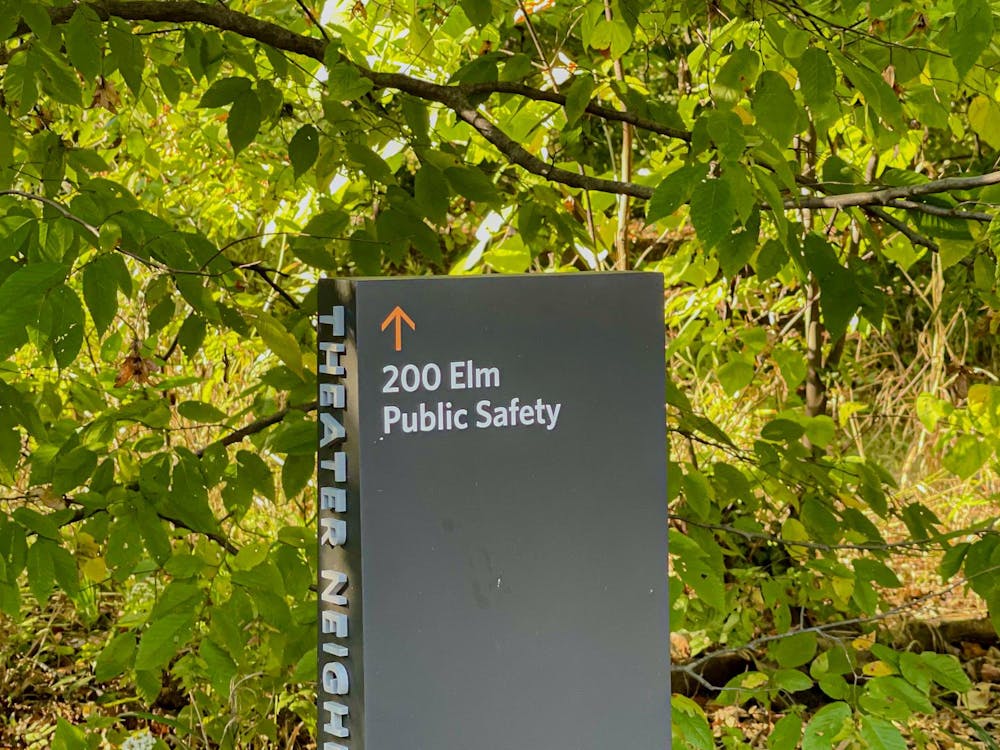In September, I attended a webinar hosted by the Program in Latin American Studies (PLAS) featuring Valeria Luiselli, the author of the novel “Lost Children Archive.” A few minutes after 5 p.m., a moderator from PLAS introduced the writer before removing herself from the main Zoom room.
It was jarring to see Luiselli react when she wound up alone on the screen. She pointed out how odd it was to be speaking into the void — to not be able to see any of the dozens of people attending the event — and sank into her chair a bit. From thousands of miles away, I watched Luiselli shrug and sigh as her voice bounced off the walls of her empty room. I read her exhaustion as a sort of resignation to the inevitable performance of translation: from the real and raw and immersed to the choppy and distant and artificial.
At the end of the day, it was a good event. Luiselli’s reading from her own book provided a fascinating lens on migration, and the panel discussion with professors — whose eventual appearance was met with delight from the author — unearthed the process of capturing those experiences for an audience.
Even so, I couldn’t quite shake the feeling that everything was off. While one of the panelists was talking, his feed froze and then cut out; the others on screen waited a long two minutes to see if he would reappear before moving on without him. When audience members asked questions, they appeared only as disembodied voices accompanied by a “[this person] is talking…” banner at the top of the screen.
COVID-19 has fundamentally shifted the paradigm of what “can” be done online; in 2020, everything from first dates to weddings, childbirths to funerals, has been reworked for Zoom. Months after we first logged into this reality, it is now easier to see its deficiencies in plain sight — and to grow accustomed to the absence of qualities that defined our shared spaces before the world went digital.
The universe guarded by our screens is boundless and tantalizing; even in a “normal” year, it informs the way in which we navigate physical space all the time. Sitting in McCosh 50 for an ECO100: Introduction to Microeconomics lecture, we can easily entertain the seductive buzzing in our pockets by pulling out our phones and inconspicuously scrolling through Facebook notifications. During a midterm review session, we might effectively miss a whole unit because of our friend’s hilarious metacommentary about the preceptor that shows up in the corner of our laptop. On a walk through campus, we could inadvertently ignore our acquaintance in passing because of a particularly compelling email we’ve just opened.
As Gabe Lipkowitz articulated in a column last year, these trade-offs can detract from our engagement in both realms. He outlined the tension between the digital and physical domains well, writing, “Our limited attention can only truly be in either: if we direct our focus to the screen of a phone as we walk, we pay less attention to the sights of space, building, and/or people around us. If we walk with headphones or earbuds, likewise, we hear fewer sounds from without.”
These are notable omissions, of course. But in all of these cases of digital distraction, we are still immersed in the physical space. Our gaze will drift back toward the lecturer or preceptor; our peripheral vision will remind us to look up from our phones so we don’t run into a wall or get hit by a car. The surrounding environment, ultimately, holds a deterministic power over our attention that technology can almost never penetrate.

Now, with all the bells and whistles of campus life reduced to hyperlinks, the dynamic has been flipped on its head. As students of a virtual classroom, we are charged with immersing ourselves in the two-dimensional.
We are involuntary mediators between the virtual and physical realms, pestered by small decisions about how much of the physical to let slip into the virtual. Do we neglect to answer a question in order to stay muted while a garbage truck arrives? Do we turn off our video feed while we finish eating our lunch? Do we apologize in the chat for our glitchy WiFi or just ignore it?
Then, of course, there is our agency to control the size and shape of the classroom, the visibility and positioning of our classmates, the brightness of their faces, and the volume of their voices. Will Gallery View or Speaker View be more conducive to my learning? Should I keep the window in full-screen or place it alongside a document for my notes? What does immersion mean when it only takes a few clicks to mute my microphone, turn off my camera, shove the Zoom call behind another window, silence my computer’s audio, or leave the call altogether?
Many of us have learned to answer these questions over time, and their relative weight has decreased since online classes first began in the spring. But they continue to have important implications for our way of relating to others — and to ourselves.

The latency of video conferencing platforms generally disjoints the flow of conversation and our ability to read other people’s reactions. Abrupt endings to class meetings rob us of once-normal opportunities to “walk out” with our peers and dig deeper into lingering questions. Connecting one-on-one with professors has become challenging or even impossible — one of my classes consists only of weekly precepts and pre-recorded lectures from 2018, and the syllabus lists no regular office hours. It is odd to know that my professor may never see my face or even register my existence without my going out of my way to make sure he does.
On top of all of this, staring at ourselves all day — effectively creating what a friend recently called a “virtual house of mirrors,” with every Zoom participant looking at himself — can be exhausting. While delivering a speech at the Center for Jewish Life’s Yom Kippur service, I couldn’t decide if I should keep my eyes on the page I was reading or alternate between the document and the camera. During my journalism seminar, I moved my laptop around until the sunlight seemed less harsh but still lit my face well; I had to readjust as the sun moved through the sky throughout the seminar. Halfway through my weekly voice lesson, I found myself continually tilting the laptop screen up and down so that the angle was just right. Each of these concerns was unique to the virtual medium, and each diluted the attention I wanted to allocate to the people in front of me.
Our relationships in and beyond the classroom are undeniably central to the quality of our learning. And while it will surprise no one that virtual Princeton is markedly different from physical Princeton, the potentially damaging impact of online learning on our way of engaging with each other should alarm us. Knowing this — and knowing what lies immediately ahead — we should fight to mitigate the effects of these phenomena.
This definitely means normalizing awkward Zoom calls, as contributing columnist Alaina Joby recently argued. But it also means sticking around more, speaking up about our needs, and creating classroom principles or contracts that acknowledge and react to the constraints of the space. Amid the complete reimagining of our lives as members of the Princeton community, the worst thing we can do is passively let silence become the new norm.
Remy Reya is a senior in the Princeton School of Public and International Affairs. He can be reached at jreya@princeton.edu.








